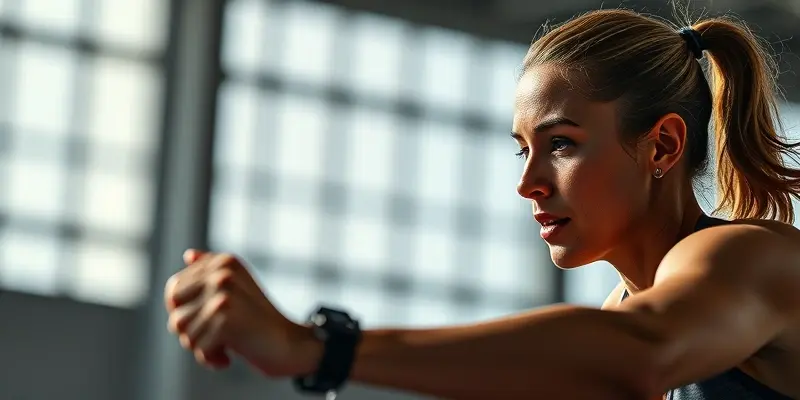Smart Recovery: Injury Prevention and Fast Healing in Pole Vaulting—Lessons from Yelena Isinbayeva
In the world of pole vaulting, few names shine as brightly as Yelena Isinbayeva. Yet, even superstars like her face setbacks—most often in the form of injuries. If you’re a fitness enthusiast, an athlete, or simply someone invested in an active life, learning how champions like Isinbayeva recover is full of powerful lessons. Let’s unlock these insights and put them to work for your own health journey.
Understanding Common Pole Vault Injuries and How to Prevent Them
Pole vaulting combines speed, strength, and technique—all of which bring unique risks. Even if you’re not a pole vaulter, many of these injuries occur in everyday training or sport.
Frequent Injuries:
- Muscle strains (hamstrings, shoulders, back)
- Ligament sprains (ankles, knees)
- Fractures (wrists, feet)
- Dislocations (shoulders)
- Tendonitis
Prevention Strategies:
- Perfect Your Technique: A clean landing reduces injury risk. Elite vaulters focus relentlessly on form.
- Strengthen and Stabilize: Integrate programs like the Throwers 10 (shoulders) or FIFA 11+ (whole body) that focus on injury prevention.
- Warm Up and Cool Down: Don’t skip these routines—dynamic warmups prep muscles for action, while cool-downs aid recovery.
- Check Your Gear: Ensure pole and pit are safe and in good condition.
- Progress Gradually: Ramp up intensity in small steps, especially if you’re new or returning from a break.
Tip: Make a checklist before each session. Have you warmed up? Is your landing area safe? Simple habits can make a huge difference.
Your Guide to Effective Recovery
Nobody plans for an injury, but knowing how to respond can shorten downtime and avoid setbacks.
Step 1: Immediate Response
- R.I.C.E.: Rest, Ice, Compression, Elevation for early-stage injury management.
- Early Movement: As pain allows, begin gentle mobility to avoid stiffness. Consult a health professional for personalized guidance.
Step 2: Structured Rehabilitation
- Build Strength and Flexibility: Focus on both injured and supporting areas. Functional movements restore sport-specific patterns.
- Balance and Coordination: Don’t ignore “smaller” stabilizing muscles—these protect you from future mishaps.
Step 3: Monitoring Progress
- Only return to full activity when you can move pain-free and confidently. Use feedback from coaches or physiotherapists.
Analogy: Think of rehab like software testing—you don’t launch until every system is glitch-free!
For more detailed steps to speed your recovery and avoid common pitfalls, check out our injury recovery checklist for a comprehensive guide.
Nutrition That Heals
Your recovery isn’t just about rest and rehab—it’s also about what you put on your plate.
- Protein: Essential for muscle repair. Think lean meats, eggs, yogurt, or plant-based sources.
- Anti-Inflammatory Foods: Include fatty fish, berries, nuts, and leafy greens.
- Micronutrients: Get enough vitamin C (citrus, peppers) and zinc (nuts, seeds, legumes) to support tissue repair.
- Hydration: Water supports every step of your body’s healing.
Sample Recovery Snack: Greek yogurt with walnuts and blueberries—a hit of protein and anti-inflammatories.
For a deep dive into the role of vitamin C immunity athletes and its benefits in recovery and injury prevention, see our detailed article.
Tools and Psychology: Accelerate Your Comeback
Muscle Recovery Tools
- Foam Rollers and Massage Guns: Aid in myofascial release.
- Compression Sleeves and Ice Packs: Help control swelling and pain.
- Wearable Tech: Track movement symmetry and fatigue, key for early detection of issues.
The Mental Edge
- Set Small Goals: Celebrate milestones, not just the finish line.
- Visualization: Picture yourself succeeding—It helps motivation and readiness.
- Build a Support Network: Share your journey with coaches, friends, or even online communities.
Real-World Example: Isinbayeva credited her coaches and mental routine for staying motivated during setbacks, fueling her world-class comebacks. For techniques to harness your mind in recovery, explore our post on visualization for healing.
What We Can All Learn from Isinbayeva
- Master Your Technique: Even in everyday fitness, good form is the best prevention.
- Start Smart: Early coaching and gradual workload build injury-resilient habits.
- Seek Guidance: Don’t go it alone—professionals speed your progress and keep rehab safe.
Take the Next Step
Recovery is part science, part art, and all about attention to detail. Whether you’re chasing Olympic heights or your next 5k, take pride in every smart choice—your body and future self will thank you.
Stay strong, train smart, and let champions like Isinbayeva inspire your next recovery journey!
Written by [Your Name], fitness and health specialist, and lead content creator at GymPulse. My mission? To help you move better, recover faster, and enjoy every step of your fitness adventure.

